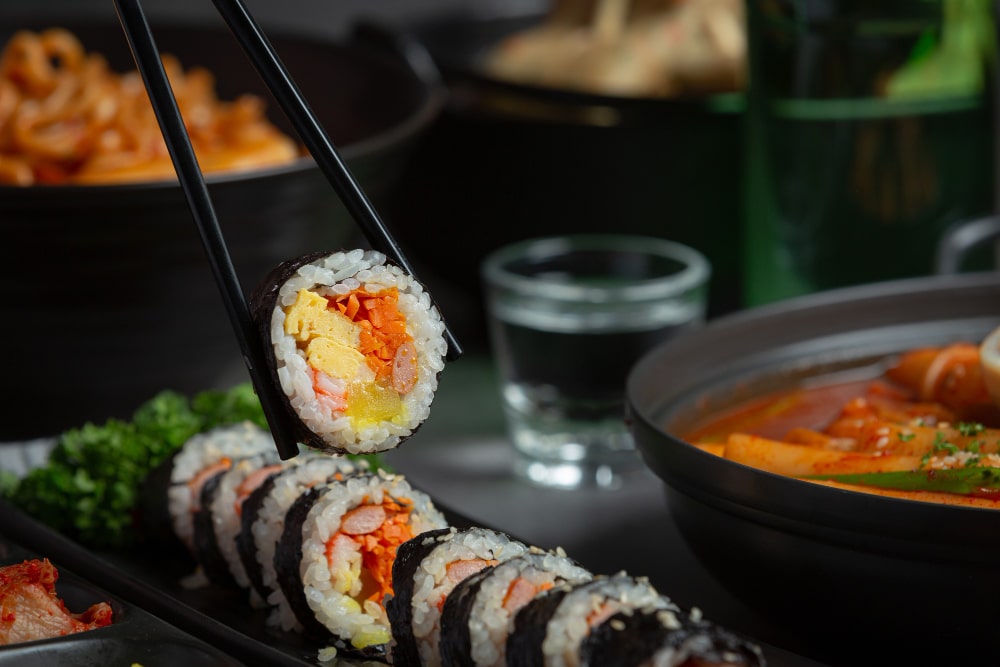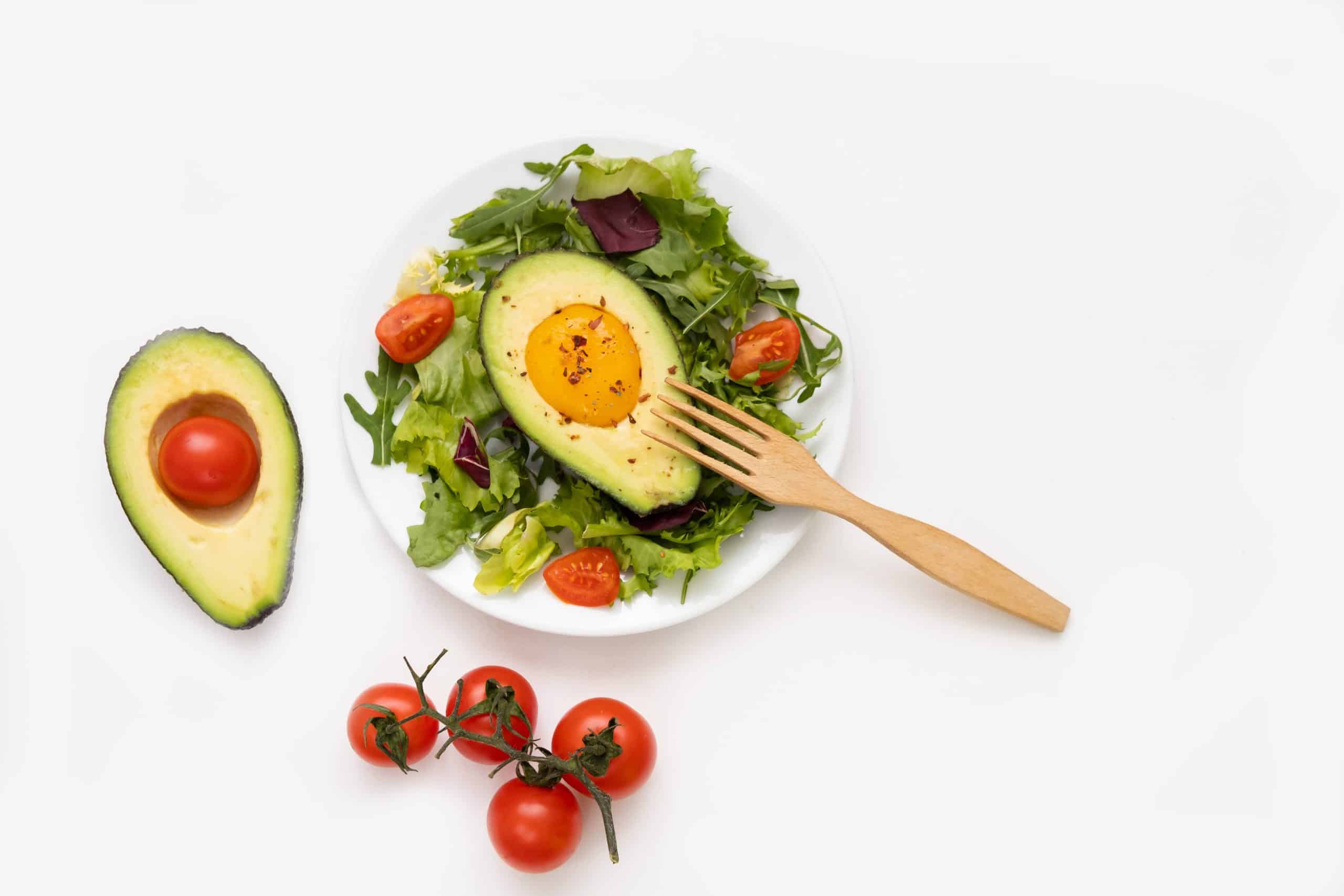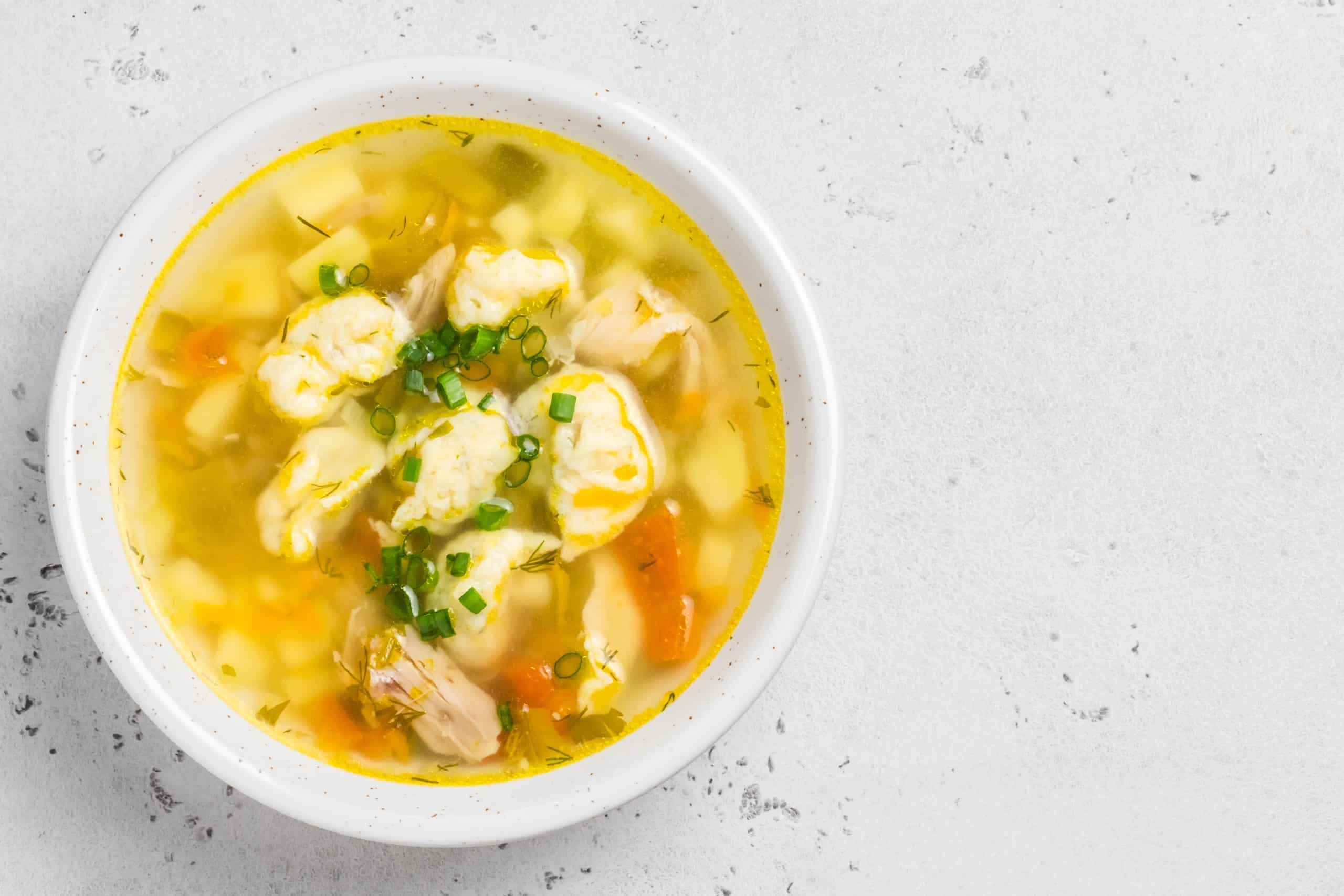Sushi is a culinary delight—fresh, delicious, and healthy. But going out for sushi can be expensive, and making it at home can be intimidating. If you’ve ever wanted to make your own sushi but didn’t know where to start, this guide is for you. We’ll walk you through everything you need to know to make excellent homemade sushi, including the ingredients, types of sushi, and how to roll your own sushi rolls. By the end of this guide, you’ll be a sushi expert!
Homemade Sushi: What Are The 3 Main Ingredients In Sushi?
If you’re new to sushi, the ingredient list can be intimidating. Fish? Rice? Seaweed? Don’t worry, we’ll break it down for you. There are really only three main ingredients in sushi: rice, fish, and seaweed.
Of course, there are many different types of sushi, and each one has its own unique ingredients. But if we’re talking about the most basic form of sushi, these are the three key ingredients.
- Rice: Sushi rice is a short-grain rice that is sticky and slightly sweet. It’s important to use sushi rice because other types of rice won’t stick together and will fall apart when you try to roll them.
- Fish: The type of fish you use is up to you. Sushi is traditionally made with raw sushi-grade fish, but you can also use cooked fish or vegetables. Some popular types of fish used in sushi are tuna, salmon, and yellowtail.
- Seaweed: Seaweed, or nori, is a type of algae that is dried and pressed into sheets. It’s what sushi rolls are wrapped in.
What Else Do You Need to Make Your Own Sushi?
In addition to the three main ingredients, there are a few other things you’ll need to make your own sushi.
- Bamboo mat: This is what you’ll use to roll your sushi. It’s important to use a bamboo mat so that the rice doesn’t stick to your hands.
- Rice vinegar: Rice vinegar is used to flavor the sushi rice. It’s a type of vinegar made from rice that is slightly sweet and sour.
- Soy sauce: Soy sauce is a salty condiment that is often used as a dipping sauce for sushi.
- Wasabi: Wasabi is a type of horseradish that is commonly used as a condiment for sushi. It’s very spicy, so use it sparingly!
- Pickled ginger: Pickled ginger, or gari, is a type of pink ginger that is often served with sushi. It’s used to cleanse your palate between different types of sushi.
- Chopsticks: You’ll need a pair of chopsticks to eat your sushi! If you don’t have any chopsticks, you can always use your fingers.
Now that you know what ingredients you need, let’s talk about how to make the sushi.
How To Make Sushi Rice
The first step in making sushi is to cook the rice. Sushi rice is different from other types of rice, so it’s important to follow these instructions carefully.
- Rinse the rice: First, rinse the rice in cold water. This will remove any impurities and excess starch from the grain.
- Cook the rice: Next, cook the rice according to package instructions.
- Flavor the rice: Once the rice is cooked, add a mixture of rice vinegar, sugar, and salt. Stir until the vinegar mixture is evenly distributed.
- Let the rice cool: Let the rice cool for about 10 minutes so that it’s easy to handle.
How To Make A Sushi Roll
Now that you have all of your ingredients, it’s time to make a sushi roll! Follow these steps and you’ll be a pro in no time.
- Place the bamboo mat on a clean surface with the slats running horizontally.
- Place a sheet of nori on the mat, shiny side down.
- Wet your hands and spread a layer of rice over the nori, leaving a 1-inch border at the top.
- Add your fillings in the center of the rice. Common fillings include fish, vegetables, and tofu.
- To roll the sushi, lift the edge of the bamboo mat nearest to you and fold it over the fillings.
- Using your fingers, apply pressure to the bamboo mat so that it sticks together.
- Continue rolling until the sushi is fully rolled up in the nori.
- Wet a sharp knife and slice the sushi roll into pieces.
And that’s it! You’ve just made your very own sushi roll.
Read More: The Best Sushi Bowl Recipes – Easy And Delicious!
A Guide To Popular Sushi Rolls
Sushi rolls are a popular and delicious way to enjoy sushi. There are many different types of sushi rolls, so it can be hard to know which one to order. Here is a guide to some of the most popular sushi rolls:
California Roll
The California roll is a popular choice for those who are new to sushi. It is made with avocado, cucumber, sesame seeds and cooked crabmeat, and is usually rolled up within rice and seaweed.
Spicy Tuna Roll
The spicy tuna roll is a popular choice for those who like a little bit of spice in their sushi. It is made with tuna that has been mixed with a spicy sauce, and is usually rolled up within rice and seaweed.
Tiger Roll
The Tiger Roll is a popular sushi roll that features broiled eel—a type of fish—shrimp tempura and cucumber wrapped in rice and seaweed. The roll gets its name from the striped pattern that is created by the eel and cucumber.
Seattle Roll
The Seattle Roll is a popular roll that is made with smoked salmon, cucumber and cream cheese. It gets its name from the city of Seattle, Washington, where it was created.
Rainbow Roll
The Rainbow Roll is a popular roll that is made with a variety of fish, including salmon, tuna and yellowtail. The roll gets its name from the colorful array of fish that is used to make it.
Philadelphia Roll
The Philadelphia Roll is a popular roll that is made with smoked salmon, cream cheese and cucumber. It gets its name from the city of Philadelphia, Pennsylvania, where it was created.
Dragon Roll
The Dragon Roll is a popular roll that is made with shrimp tempura, cucumber and avocado. It gets its name from the dragon-shaped design that is created when it is rolled up.
Homemade Sushi Dos And Don’ts
Making your own sushi at home can be a fun and delicious way to enjoy this popular Japanese dish. However, there are some important do’s and don’ts to keep in mind when making homemade sushi.
DO:
- Choose the right rice. Sushi rice is a short grain rice that is sticky and slightly sweet. This type of rice is essential for making sushi rolls that stay together and have the correct texture.
- Rinse the rice before cooking. Rinsing the rice helps to remove any impurities and gives it a cleaner flavor
- Cook the rice properly. Sushi rice should be cooked until it is tender but not mushy. It is important to rinse the rice several times before cooking to remove excess starch.
- Use fresh ingredients. Fresh fish, vegetables, and seaweed are essential for making delicious sushi. If you are using raw fish, make sure it is sushi grade and has been stored properly.
- Be creative with your fillings. While traditional sushi rolls usually include fish, there are no hard and fast rules when it comes to making your own at home. Get creative and experiment with different meats, vegetables, and even fruits.
- Place a strip of plastic wrap over the bamboo sushi mat. This will help to prevent the rice from sticking to the mat as you roll.
Looking for a way to break the vicious cycle of weight loss and tone up all the jiggly parts? Watch the extra pounds fly off and your muscles firm up with the BetterMe app!
DON’T:
- Use too much rice. When making sushi rolls, be sure to use just enough rice so that it holds the other ingredients together without overpowering them.
- Use old, stale rice. Rice is a key ingredient in sushi, so using fresh, high-quality rice is essential.
- Overcrowd the sushi roll. When adding fillings to your sushi roll, be sure to leave enough space so that you can easily roll it up without everything falling out.
- Use too much wasabi. A little bit of wasabi goes a long way, be careful not to add too much or it will overwhelm the other flavors.
- Leave the sushi rolls out for too long. Once you’ve made your sushi rolls, be sure to eat them right away for the best flavor and texture.

Health Benefits Of Sushi
Eating sushi has a number of health benefits:
Rich Source of Omega-3s
The fish in sushi is a good source of omega-3 fatty acids, which are beneficial for heart health. These healthy fats may help to lower cholesterol and blood pressure, and reduce the risk of heart disease and stroke (2).
Low in Calories
Sushi is a low-calorie food, making it a good choice for those looking to lose weight or maintain a healthy weight.
Read More: Energy Balls: The Best Ingredients To Beat The Midday Energy Slump
Good Source of Protein
Sushi is a good source of protein, which is essential for muscle growth and repair. Protein can also help to keep you feeling full and satisfied after eating (4).
Contains Vitamins and Minerals
Sushi is a good source of several vitamins and minerals, including vitamin B12, selenium, and iodine. These nutrients are important for maintaining healthy energy levels, a strong immune system, and proper thyroid function (7).
The seaweed used to make sushi rolls is also a good source of fiber, which is important for digestive health.
Downsides Of Sushi
There are also some potential downsides to eating sushi:
May Contain Mercury
Many types of fish used in sushi, such as tuna and swordfish, can contain high levels of mercury. Mercury is a toxic metal that can cause serious health problems, including brain damage (5).
Pregnant women and young children are especially vulnerable to the effects of mercury and should avoid eating fish high in mercury (3). They are also advised to avoid raw fish for the risk of foodborne illness.
May Contain Parasites
Raw fish used in sushi may contain parasites, which can cause food poisoning. These parasites are usually killed through cooking or flash freezing, so it is important to make sure that any sushi you eat is made with fresh, properly cooked fish or sushi grade fish which has been stored properly (8).
If you tend to let yourself off the hook, raise the white flag when things get tougher than you expected, send yourself on an unconscious binge-eating trip – BetterMe app is here to help you leave all of these sabotaging habits in the past!
May Contain Raw Eggs
Some types of sushi, such as nigiri and temaki, are made with raw eggs. These eggs may contain harmful bacteria that can cause food poisoning (6).
Pregnant women, young children, and elderly adults are at a higher risk for food poisoning and should avoid eating sushi made with raw eggs or raw or undercooked fish (6).
May Increase Your Sodium Intake
Sushi is often made with soy sauce, which is high in sodium. Eating too much sodium can increase your risk of high blood pressure and heart disease (1). If you are concerned about your sodium intake, be sure to use low-sodium soy sauce.
The Bottom Line
Eating sushi can be a healthy and delicious way to enjoy a meal. Keep in mind that the health benefits of sushi depend on the type of fish and other ingredients used.
When choosing sushi, opt for rolls made with fresh fish and vegetables, and be sure to limit your intake of high-calorie sauces and toppings. With a few simple tips, you can enjoy sushi without having to worry about packing on the pounds.
DISCLAIMER:
This article is intended for general informational purposes only and does not address individual circumstances. It is not a substitute for professional advice or help and should not be relied on to make decisions of any kind. Any action you take upon the information presented in this article is strictly at your own risk and responsibility!
SOURCES:
- Is too much salt harmful? Yes (2019, nih.gov)
- Omega-3 Fatty Acids EPA and DHA: Health Benefits Throughout Life1 (2012, nih.gov)
- Prenatal Mercury Exposure in Pregnant Women from Suriname’s Interior and Its Effects on Birth Outcomes (2020, nih.gov)
- Protein for Life: Review of Optimal Protein Intake, Sustainable Dietary Sources and the Effect on Appetite in Ageing Adults (2018, nih.gov)
- Risk estimation to human health caused by the mercury content of Sushi and Sashimi sold in Japanese restaurants in Brazil (2017, pubmed.gov)
- Salmonella and Eggs: From Production to Plate (2015, nih.gov)
- Vitamins and Minerals (n.d., harvard.edu)
- ‘Sushi parasites’ have increased 283-fold in past 40 years (2020, washington.edu)
















